Vive Flow hands-on: Super-light VR goggles has problems
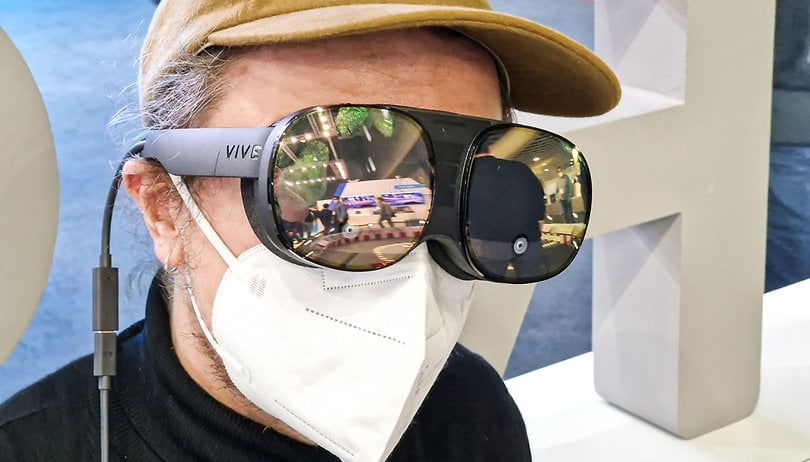

Bzz Bzz Bzz! The Vive Flow makes you look like a housefly! The portable VR goggles are super light at just 200 grams, are surprisingly comfortable to wear, and is of better quality than I would have thought before wearing them. But I'll tell you why these portable glasses still have many problems in the hands-on as I bring you word straight from the press center at MWC 2022.
Good
- Very light
- Very comfortable
- Surprisingly sharp displays
- Easy diopter adjustment
Bad
- Incompatible with the iPhone
- Not usable without a smartphone
- Still jerky
- Takes some getting used to
- Not that affordable
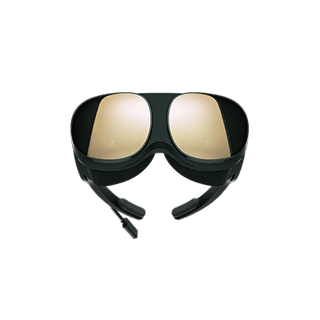
HTC Vive in a nutshell
The HTC Vive is already available in some countries. In the US, you will pay $499 for the VR glasses that arrive in the sunglasses form factor. In addition, having a HTC Viveport subscription is highly recommended to take advantage of the glasses' full range of features. HTC's online store also offers accessories like a USB-C adapter and a case, which together cost slightly less than $100.
Design & workmanship: Do you dare?
The Vive Flow tips the scales at a mere 189 grams without the cable and would have easily fit in my jacket pocket after the hands-on. This makes it the lightest and smallest VR glasses that HTC Vive has to offer. To ensure that annoying light is kept away from my eyes, the Vive Flow comes with a fabric privacy screen.
What I liked:
- Really cozy!
- Very light.
- Remains quite secure even without a head strap.
What I disliked:
- Optics require a lot of self-confidence from the wearer.
- Not usable without cable.
- The protective cover is an optional buy.
The HTC Vive Flow immediately caught my attention at MWC 2022 in Barcelona. That's because the glasses look delightfully stupid with their mirrored front. I definitely wanted to put those on for a fun article picture! However, my opinion of the glasses changed when I wore them. That's because, for a VR goggle, the Vive Flow is surprisingly light and snug.
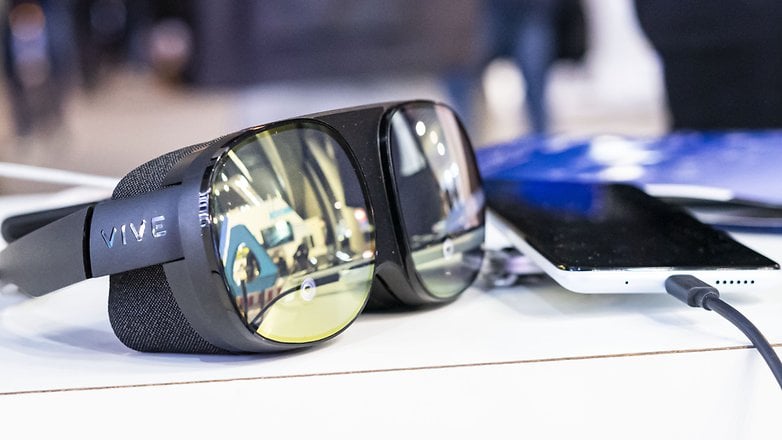
The Flow weighs just 189 grams, and I can well imagine that it won't feel particularly heavy on your nose even after wearing it for an hour. You also feel free when wearing them because there is no head strap to get bogged down with. Surprisingly, I didn't feel insecure while looking around in the virtual world and wasn't too worried that the glasses would fall off right away.
Speaking of falling off: Unfortunately, the protective case for the Vive Flow is only available as an optional extra. So you'd better find a suitably large glasses case to store it, or you can simply bite the bullet.
Displays: 3.2K at 75 Hertz
The two displays of the Vive Flow have a combined resolution of 3.2K. The manufacturer uses LCD displays that measure 2.1-inches and work with a refresh rate of 75 Hertz. The field of view is supposed to be 100 degrees. There is a passthrough mode to find your way outside of virtual reality.
What I liked:
- Surprisingly sharp and bright display.
- Passthrough mode provides additional security.
- Easy diopter adjustment.
What I disliked:
- "Motion sickness" triggered at only 75 Hertz.
- The field of view is rather limited at 100 degrees.
The Vive Flow's displays aren't necessarily technically impressive. Nevertheless, I found the VR experience with the Flow to be rather cool. As part of the demo, I was immersed in various paintings, which were transferred to a 3D environment in the process. For example, I was able to experience the Starry Night by Van Gogh with very good depth perception and even turn around to the left and right.
However, a good degree of sharpness is only achieved when the glasses are placed at the right distance on the nose. I had to adjust them a few times in the hands-on, but I did not find that to be really annoying. On the other hand, the integrated diopter adjustment, which works via two rotating rings inside the glasses, is a practical addition. Overall, I really liked the sharpness and quality of the glasses.
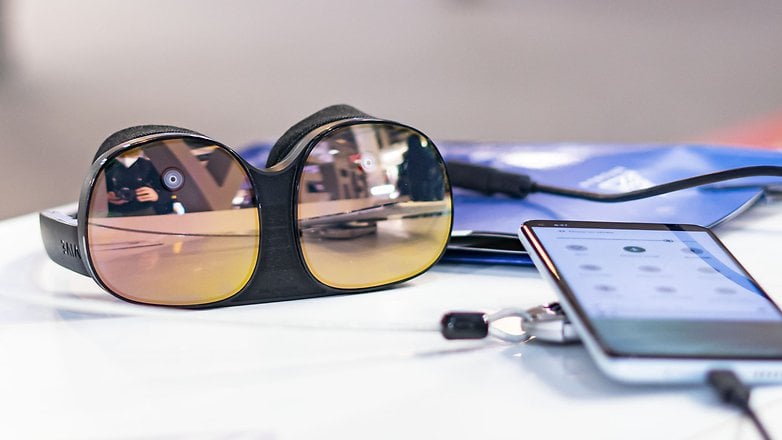
After a few minutes of trying them out, however, I had a slightly sinking feeling in my stomach. at only 75 hertz, the display isn't quite as smooth as in reality or other VR goggles, and that led to motion sickness for me. Since the goggles are also meant for use on a car, I can imagine that this feeling would be even more pronounced there.
The field of view of the glasses is also still rather narrow at 100 degrees that you feel like you are looking through a small tunnel. Here, I have been hoping for a revolution that offers an edge-to-edge VR experience for years, but I will probably have to wait a while more for that to happen.
What I unfortunately could not try out in the hands-on was the passthrough mode. This fades in the surroundings via the cameras that are located in the front, making it easier to briefly find your way around the boring "real" reality. Unfortunately, the feature did not work at the trade show.
Performance: Test model is jerky and hangs often
The Vive Flow only works in conjunction with a smartphone that runs on a newer operating system than Android Pie (Android 9). Apple's iPhones are unfortunately incompatible with the glasses. Despite their dependence, the glasses offer 4 GB of RAM and 64 GB of internal storage.
What I liked:
- -
What I disliked:
- Glitchy and error-prone during the hands-on.
- Smartphone operation is not that precise.
- iPhone incompatibility.
The performance of the glasses gave me the impression at MWC 2022 that it was a product that is not yet ready to be released. So I was a bit surprised when the HTC representative told me that the glasses are already available in stores. Since the Vive Flow didn't even work in the first place, I had to return at a later time.
The aforementioned art demo worked pretty well. But when switching to the menu to try the passthrough mode, the glasses kept crashing. To operate them, you will need to use a connected smartphone, which you have to move to control them like how a remote control of the legendary Nintendo Wii works. This also caused crashes time and again in the hands-on, where the virtual phone got stuck to the right side of my head.
However, my biggest criticism is that the Vive Flow cannot be used with iPhones, which directly excludes a large number of potential users. Our colleagues from Curved also criticize the insufficient Wi-Fi connection in the hands-on. Unfortunately, I could not test that out at the trade show.
Early Verdict
I actually really like HTC's new Vive Flow! The form factor is finally compact enough that I could imagine wearing the glasses on the train or on car trips for movies or games. However, the model on display at MWC 2022 really didn't make a good impression. As a VR newbie, I did not find the display quality bad at all. The image was bright, it offered a good 3D impression, and was sharp enough for me.
However, the numerous crashes, non-launching apps, and error-prone remote control were already annoying within the first ten minutes of testing. For a price of $499, I would be really disappointed by the performance of the Flow after making a purchase. Furthermore, I could not use the VR goggles to their full extent with an iPhone.
To fully enjoy it, you will also have to buy an adapter and a charging case as well as a subscription to Vive in addition to the initial $499 investment. That's quite a lot of money just to be able to comfortably put a pair of VR glasses in your jacket pocket. I have asked HTC for a review unit, so let's wait and see how the Vive Flow performs in a detailed everyday review!













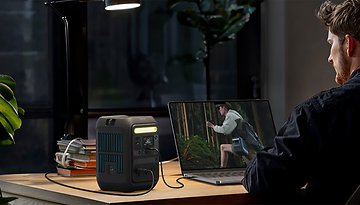







If you get a chance to talk to the designers of these sorts of things, they need to be aware of those who wear hearing aids. These heavy thick ear pieces look pretty hearing-aid hostile.
Remember, we're all heading toward disability of one or more sorts as we age. We should be considering these issues in all of our designs for inclusivity today and for our future selves.